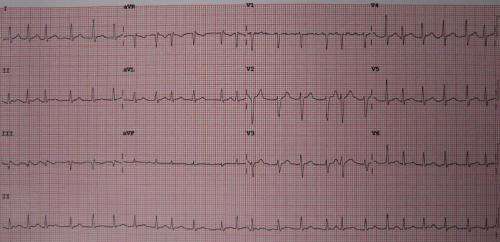This article has been reviewed according to Science X's editorial process and policies. Editors have highlighted the following attributes while ensuring the content's credibility:
fact-checked
trusted source
proofread
Study reports 'excellent' outcomes for patients receiving optimized treatment for atrial fibrillation

Atrial fibrillation (AF) is the most common form of arrythmia or irregular heartbeat worldwide, impacting millions of people in the U.S. alone. In a study published in Heart Rhythm, researchers from Brigham and Women's Hospital, a founding member of the Mass General Brigham health care system, analyzed real-world clinical data to measure the impact of evidence-based best-practices on patient outcomes for the most common AF procedure: radiofrequency (RF)-based ablation.
One year after the procedure, 81.6% of patients were free from atrial arrhythmias, higher than rates reported from clinical trials, and 89.7% of these patients were off antiarrhythmic drugs. Results were presented simultaneously at a late-breaking clinical trial presentation at the Heart Rhythm 2024 meeting in Boston, MA.
"When we incorporate what we think are the best strategies for radiofrequency-based ablation, we can further improve the long-term patient outcomes," said corresponding author Paul Zei, MD, an electrophysiologist and physician-researcher at Brigham and Women's Hospital.
"With high-volume experienced operators using these best practices, we are reporting excellent short and long-term clinical outcomes, with more than 80% long-term success and very low complication rates."
RF-based ablation uses radiofrequency energy to inactivate the heart tissue responsible for producing irregular electrical signals. Though RF-based ablation's safety and efficacy have been previously demonstrated in randomized, controlled clinical trials, the technique is ever evolving, and little is known about the effectiveness and safety of the technique outside of clinical trials.
The study used data from the REAL-AF registry, a multi-center registry that Zei co-founded in 2019 to evaluate long-term outcomes and clinical management in patients treated for AF. The registry consists of over 50 centers that regularly perform a high volume of RF-ablation procedures and who conform to contemporary best-practice techniques—including a focus on isolating the pulmonary vein, reducing or eliminating the use of fluoroscopy during the procedure, and using a shorter but higher blast of radiofrequency to reduce procedural time.
"We studied experienced operators and centers to try to ensure that we were studying the best techniques that are already being used," Zei said. "Our motivation is to learn the best approaches for RF-based ablation and adjust and improve those approaches so that our outcomes get even better."
The researchers evaluated data from 2,470 patients in the REAL-AF registry who had undergone RF-based ablation for paroxysmal AF, the form of AF in which symptoms come and go. For each patient, the team evaluated procedure time and technique, and examined patient outcomes immediately after the procedure and 12 months later.
Zei's team reports that procedures in the REAL-AF registry are more efficient, safe, and effective compared to data from randomized clinical trials. At one-year follow-up, freedom from all-atrial arrhythmia and AF were 81.6% and 85.7%, respectively. Moreover, 93.2% of patients reported no arrhythmia symptoms during the follow-up period.
Average procedure time was also significantly shorter, which improves patient safety by reducing time under anesthesia and means that hospitals and operators can perform more of these high-demand procedures.
Going forward, the researchers plan to continue to refine RF-ablation procedure for both paroxysmal AF, the focus of this study, and persistent AF.
"It's an ongoing endeavor," said Zei. "An important next step will be to apply similar strategies to try to understand how this procedure can be improved for patients with the persistent type of AF, which is more difficult to treat than paroxysmal AF."
In the future, Zei says that the registry model used in this study could be easily adapted to optimize other medical procedures in electrophysiology and beyond.
"As well as being a study, the registry is a learning health network. We're not only evaluating the best approach for RF-based ablation; we're also learning from each other," Zei said. "The goal is to disseminate best practices across every operator and center."
More information: Osorio, J & Miranda-Arboleda, A et al. Real-World Data of Radiofrequency Catheter Ablation in Paroxysmal Atrial Fibrillation: Short- and Long-term Clinical Outcomes from the Prospective Multicenter REAL-AF Registry, Heart Rhythm (2024). DOI: 10.1016/j.hrthm.2024.04.090 , www.heartrhythmjournal.com/art … (24)02524-4/fulltext



















